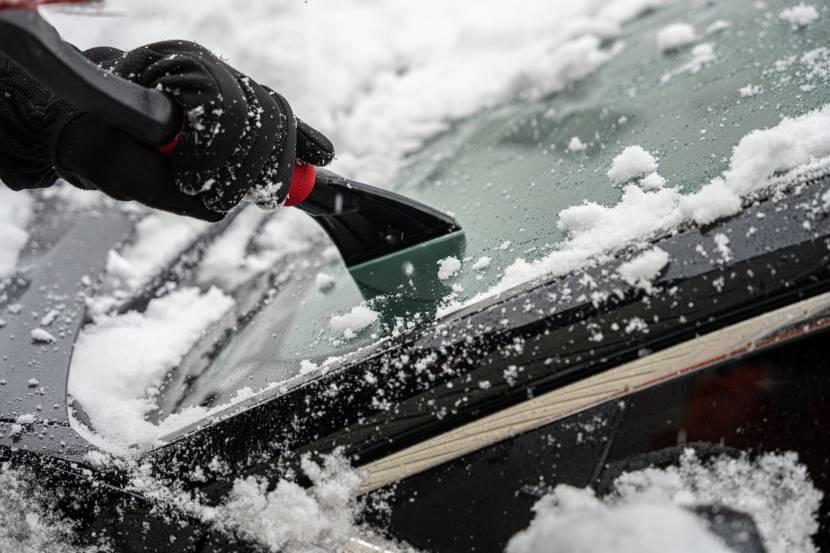Some people might reach for the kettle or their bank card to de-ice their car. But these methods could lead to a cracked windscreen or even a fine.
Some simple cupboard staples could keep your windscreen frost-free. And you won’t have to use that half-frozen bank card to pay off a fine.
Here's what you need to know.

How to de-ice your car
-
Check your windscreen wipers. Make sure your wipers aren't switched on - if they're frozen to the windscreen they could be damaged when the engine starts.
-
Switch on your ignition and turn up the heat. Turn your blowers to full and the temperature to high. Point them at the windscreen - if you have a heated windscreen option, switch it on. If your car has A/C, switch it on to keep the air dry.
-
Use a de-icer and ice scraper. It's always useful to keep a can of de-icer nearby. Next, scrape off the ice using your scraper. You might need to scrape some ice off the inside of the windscreen too, but this can be trickier due to the curved glass.
-
Get rid of any condensation. All that hot air blowing at a cold windscreen might lead to condensation on the inside of the car. We've got you covered there too - here's how you get rid of condensation in the car
Ice inside my windscreen - what can I do?
Getting rid of ice inside your windscreen is similar to de-icing and getting rid of condensation:
-
Turn on your car’s heating system - it might be worth putting a towel underneath any frosty sections to catch any moisture.
-
Use a heated, but not wet, towel and gradually rub away at the ice. You could use a hand warmer or heat pack for this too.
Ice inside your windscreen is often caused by moisture inside your car. If the temperature gets below freezing, this moisture can freeze causing ice inside your windscreen.
You can stop this happening in the same way as you would if you wanted to stop condensation inside your car:
-
Get a dehumidifier for your car - this can remove any excess moisture
-
Remove anything that could bring moisture into your car - for example, clothes or wet boots
-
Clean your windscreen and windows, inside and out - moisture can settle on dirt so removing this could help stop moisture building up
If you're taking these measures and still noticing moisture and ice inside your windscreen, it's worth speaking to a mechanic. You might have a leak in your car that needs fixing.
De-icing techniques to avoid
Don't use boiling water. The shock of the extreme heat on the cold glass could crack your windscreen. And fixing that isn't going to be cheap.
If you switch your engine on to warm your car, don't leave it too long. Having an idle engine could land you with a £20 fine.
And if you're on your own, don’t leave your car unattended while it's running.
When you're rushing to get away in the morning, it’s easy to reach for the nearest sharp object and carve a porthole in the ice.
But using anything other than a car ice scraper could scratch your windscreen.
But more serious is the possibility of a £60 fine and three points on your licence. This is the penalty for driving with a limited view of the road.
And with points on your licence, you might find that your car insurance costs go up when it comes to renew your policy.
Compare car insurance quotes
Why does my windscreen ice up?
As the temperature drops below freezing, water vapour in the air becomes super-cooled. This causes frost and ice.
But the temperature doesn’t have to drop below freezing for your windscreen and windows to freeze over
The glass of your car's windows freeze over much quicker than any other surface of the car.
This is similar to how water vapour becomes condensation when it hits a cold surface.
How to keep car windows from freezing overnight
If you don’t have time to de-ice your car in the mornings or hate all the scraping, it may make sense to invest in a windscreen frost cover.
Or, if you dread the thought of a frozen car you could consider a full car cover to protect all the windows and the bodywork too.
Alternatively, you can put a towel over your windscreen and pin it in place with the wipers and doors. It won't do as good a job as a proper cover, but it'll help reduce your de-icing time.







